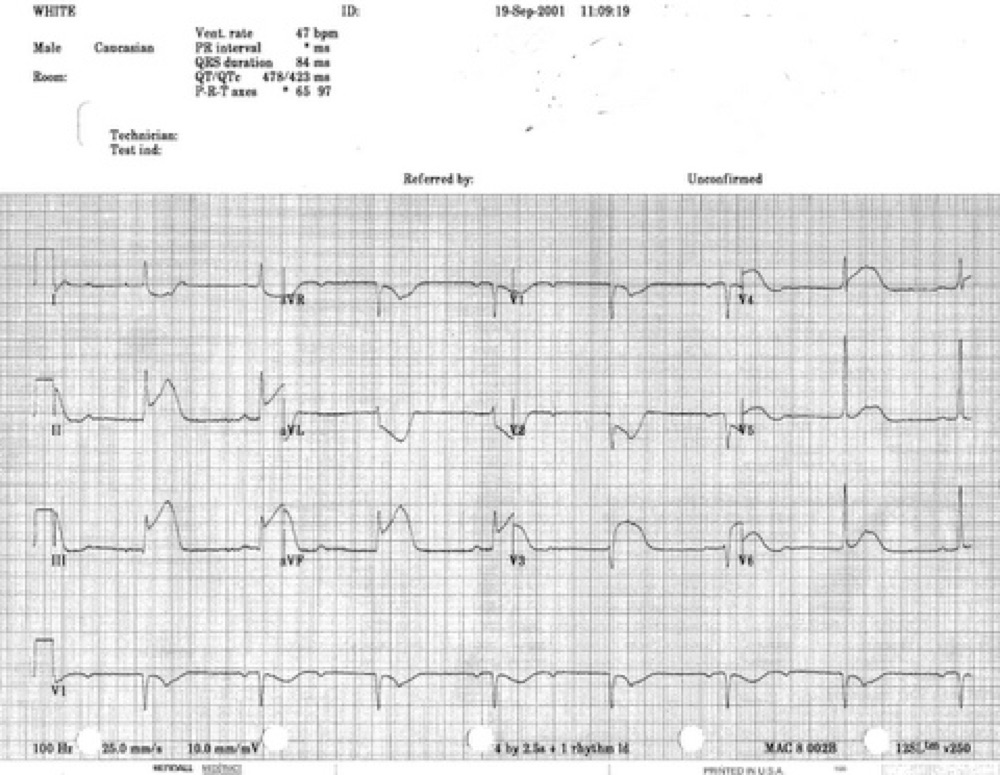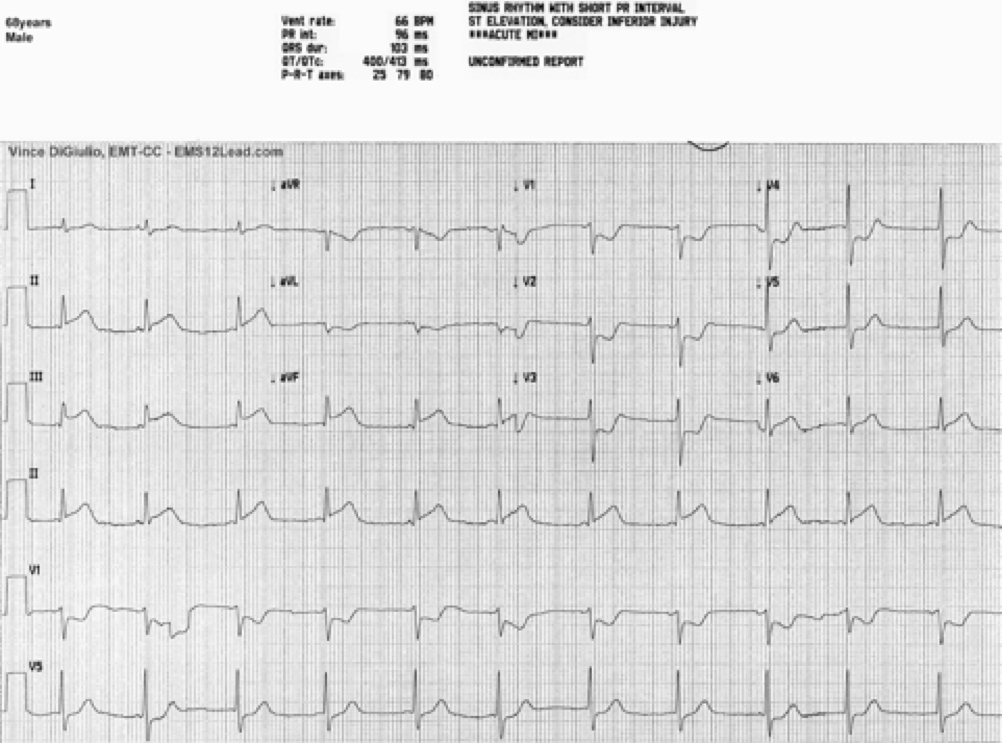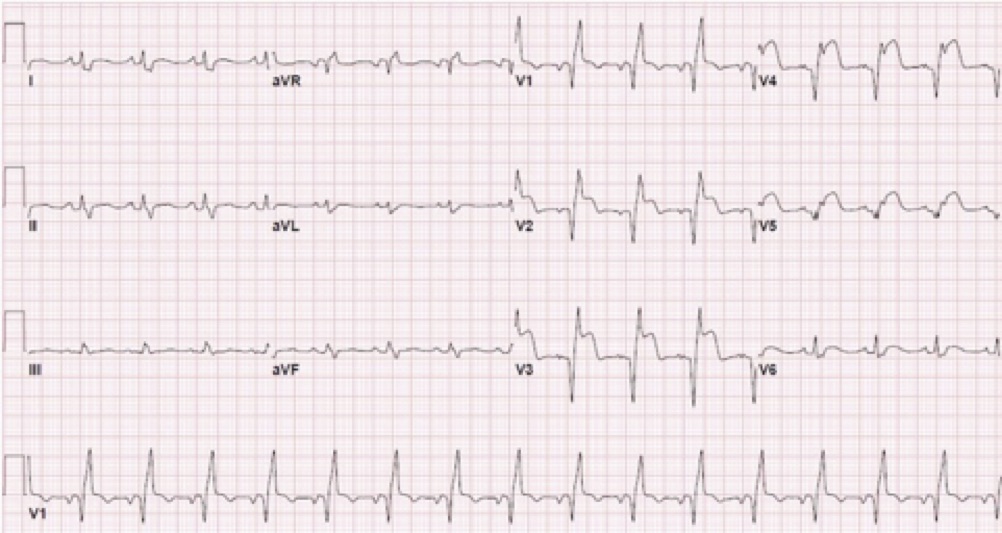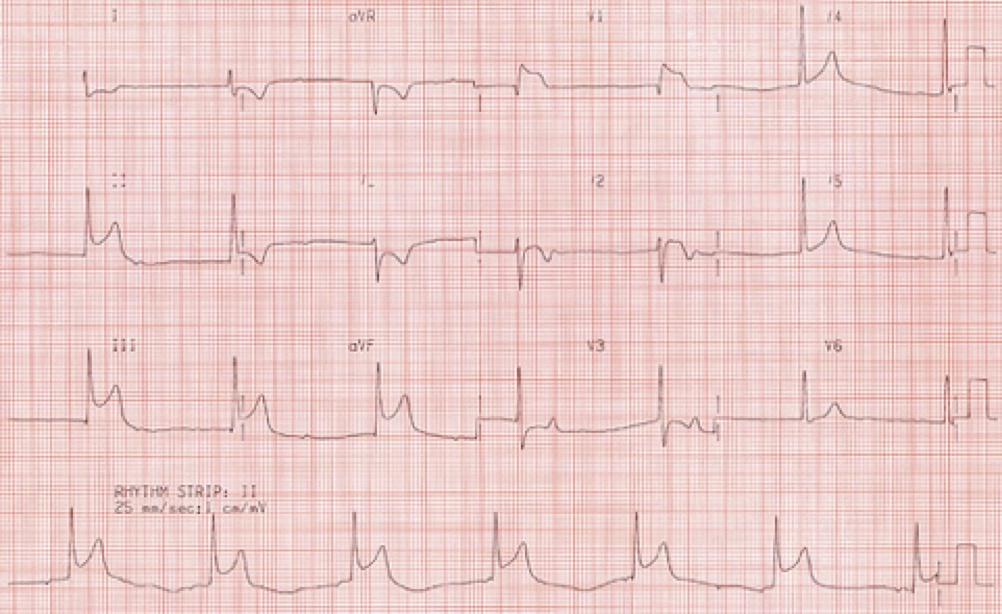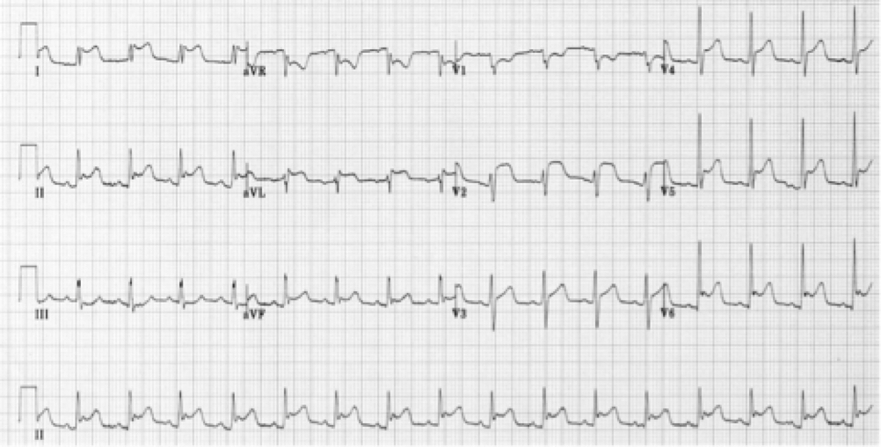MODULE 13 EMQs
EMQ 1.
A 55 year old man presents with central crushing chest pain.
A 55 year old man presents with central crushing chest pain.
Answer: right coronary artery infarct
Comment: this ECF evinces inferolateral ischaemia, with associated depression in I and aVL. The fact that the ST elevation is greatest in lead III implies a right sided current of injury originating from a right coronary artery infarct.
EMQ 2.
A 66 year old woman presents with central crushing chest pain.
Comment: this ECF evinces inferolateral ischaemia, with associated depression in I and aVL. The fact that the ST elevation is greatest in lead III implies a right sided current of injury originating from a right coronary artery infarct.
EMQ 2.
A 66 year old woman presents with central crushing chest pain.
Answer: Circumflex infarct
Comment - this patient has inferior ischaemia, and reciprocal changes in the anterior leads suggesting an element of posterior ischaemia, occurring from acute occlusion of the circumflex artery.
EMQ 3.
A 78 year old man presents with acute crushing central chest pain.
Comment - this patient has inferior ischaemia, and reciprocal changes in the anterior leads suggesting an element of posterior ischaemia, occurring from acute occlusion of the circumflex artery.
EMQ 3.
A 78 year old man presents with acute crushing central chest pain.
Answer: LAD infarct
Comment: this patient has clear changes in the anterior leads, the territory of the LAD. This particular ECG is complicated by a right bundle branch block.
EMQ 4.
A 64 year old man presents with crushing central chest pain.
Comment: this patient has clear changes in the anterior leads, the territory of the LAD. This particular ECG is complicated by a right bundle branch block.
EMQ 4.
A 64 year old man presents with crushing central chest pain.
Answer: right ventricular infarct.
Comment: there are several important points about this ECG. The asymmetric inferior ST elevation implies a right coronary artery infarct, but the isolated ST elevation in V1 strongly implies involvement of the right ventricle. A right sided ECG should be performed.
EMQ 5.
A 55 year old man presents with central chest pain a week after being discharged post PCI for a NSTEMI.
Comment: there are several important points about this ECG. The asymmetric inferior ST elevation implies a right coronary artery infarct, but the isolated ST elevation in V1 strongly implies involvement of the right ventricle. A right sided ECG should be performed.
EMQ 5.
A 55 year old man presents with central chest pain a week after being discharged post PCI for a NSTEMI.
Answer: Dressler’s syndrome
Comment: this ECG shows non anatomic saddle shaped ST elevation. In the setting of a recent MI this is strongly suggestive of Dressler’s syndrome.
Comment: this ECG shows non anatomic saddle shaped ST elevation. In the setting of a recent MI this is strongly suggestive of Dressler’s syndrome.
